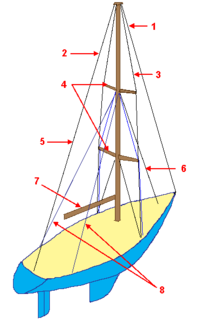
Photo from wikipedia
Abstract The effectiveness of two proposed lateral load patterns (LLPs) to estimate the seismic demands of base-isolated building frames by the pushover analysis (POA) is assessed by comparing their estimates… Click to show full abstract
Abstract The effectiveness of two proposed lateral load patterns (LLPs) to estimate the seismic demands of base-isolated building frames by the pushover analysis (POA) is assessed by comparing their estimates with the benchmark responses obtained by the nonlinear time history analysis (NTHA). The proposed LLPs include: (i) pattern derived from the square root of the sum of squares (SRSS) of first three mode shapes of BI frame; and (ii) two variants derived by the modification of the uniform force distribution load pattern. The conventional first mode shape LLP is also used in the POA for the purpose of comparison. A mid-rise (5-storey) and a high-rise (10-storey) base isolated (BI) reinforced concrete building frames are considered as illustrative examples for the analysis. An ensemble of five ground motion time-histories, each of far-field and near-field with forward directivity and fling-step effects are employed for NTHA. Target displacement-based comparison is performed by considering three target displacements, which cater to elastic, elastic to plastic and plastic states on the capacity curve of the building frames. The seismic demands namely, peak storey displacement, maximum inter-storey drift, number of plastic hinges, SRSS of plastic hinge rotations, maximum base shear and maximum isolator displacement are considered for comparison. The study reveals that (i) the errors in estimating the seismic demands by different LLPs depend on the state (elastic or elastic–plastic or plastic) of the building frame in which target displacement is considered; and (ii) the proposed LLP (modified uniform distribution) is found to best estimate the NTHA predictions.
Journal Title: Engineering Structures
Year Published: 2018
Link to full text (if available)
Share on Social Media: Sign Up to like & get
recommendations!